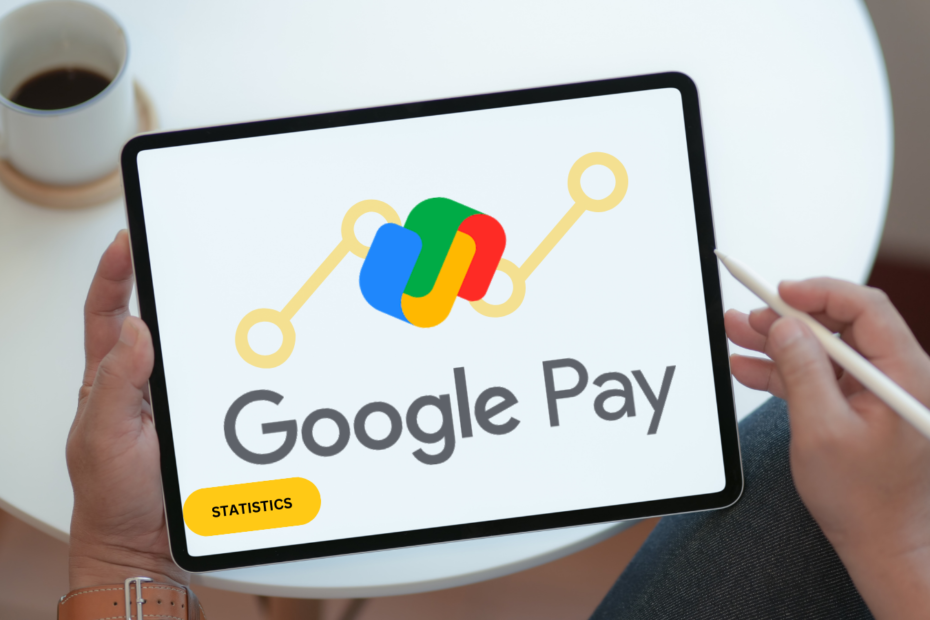Understanding the Mobile Payment Landscape: More Than Just Numbers
When you first open your smartphone and tap to make a payment, you‘re participating in a global financial transformation that‘s reshaping how we think about money. Google Pay isn‘t just an app—it‘s a window into the future of digital transactions, representing a profound shift in financial technology and consumer behavior.
The Global Context of Digital Payments
Digital payment platforms have emerged as more than convenient alternatives to cash. They represent a fundamental restructuring of financial interactions, bridging technological innovation with everyday economic activities. Google Pay stands at the forefront of this revolution, offering insights into broader trends of digital financial engagement.
User Demographics: Who‘s Driving the Mobile Payment Wave?
Understanding Google Pay‘s user base reveals fascinating insights into generational technology adoption. Contrary to traditional assumptions, mobile payment technologies aren‘t exclusively dominated by younger generations. Instead, we‘re witnessing a nuanced landscape of digital financial engagement.
Generational Breakdown of Google Pay Users
Millennials represent approximately 30% of Google Pay‘s user base, confirming their reputation as early technology adopters. However, the most intriguing statistic emerges from older demographics: roughly 10% of users are over 59 years old, challenging preconceived notions about technological adaptability among senior populations.
Generation X contributes around 15% to the platform‘s user profile, demonstrating a steady technological comfort zone that bridges younger and older user segments. This diverse demographic spread highlights mobile payments‘ universal appeal across age groups.
Regional Variations: A Global Technological Tapestry
India: A Mobile Payment Powerhouse
In India, Google Pay has achieved remarkable market penetration, capturing 36.10% of the mobile application market. This success isn‘t accidental but results from strategic technological infrastructure development and progressive digital payment policies.
The Indian market showcases how governmental initiatives like the Unified Payments Interface (UPI) can catalyze widespread digital payment adoption. Google Pay‘s success in this region represents more than a corporate achievement—it‘s a testament to national technological transformation.
United States: A Competitive Landscape
The American market presents a more fragmented mobile payment ecosystem. While Google Pay boasts approximately 25.2 million users, it competes with robust alternatives like Apple Pay and Samsung Pay. This competitive environment drives continuous innovation and user experience improvements.
Russia: An Unexpected Digital Payment Hub
Surprisingly, Russia emerges as a significant Google Pay market, with 35.18% of payment processor usage. Approximately 3,549 websites integrate Google Pay, indicating a robust digital payment infrastructure that challenges Western-centric technological narratives.
Transaction Volumes and Economic Significance
Google Pay‘s transaction statistics reveal more than numerical data—they reflect changing consumer behaviors and technological trust. The platform processes an impressive 1,281,838 transactions, representing 26% of recorded online payments.
Sector-Specific Adoption
Retail leads Google Pay usage at 18%, followed by Apparel & Fashion at 6%. These figures aren‘t just percentages but indicators of how different industries are integrating digital payment technologies into their operational frameworks.
Security and Trust: The Invisible Infrastructure
While transaction volumes impress, the underlying security infrastructure truly distinguishes Google Pay. Advanced encryption, multi-factor authentication, and real-time fraud detection mechanisms transform mobile payments from convenient alternatives to secure financial tools.
Authentication Techniques
Modern mobile payment platforms employ sophisticated authentication strategies:
- Biometric verification
- Device-specific encryption
- Machine learning-powered anomaly detection
- Tokenization of financial credentials
These technologies don‘t just protect transactions; they rebuild consumer confidence in digital financial interactions.
Future Projections: Beyond Current Capabilities
Technological Convergence
The next phase of digital payments will likely integrate:
- Artificial intelligence-driven personalization
- Blockchain-enhanced security protocols
- Cross-platform interoperability
- Predictive financial recommendations
Google Pay isn‘t just a payment platform—it‘s a technological laboratory experimenting with future financial interaction models.
Investment and Economic Implications
For investors and economic strategists, Google Pay represents more than a technological product. It‘s a proxy for understanding digital economic transformation, offering insights into:
- Consumer technology adoption rates
- Financial service innovation
- Global economic digitalization trends
Conclusion: A Technological Watershed
Google Pay symbolizes more than a payment method. It represents a profound reimagining of financial interactions, transcending geographical and generational boundaries.
As digital payment technologies continue evolving, platforms like Google Pay will play increasingly critical roles in shaping global economic landscapes. The journey from cash to digital transactions is not just technological—it‘s a fundamental restructuring of how humans conceptualize and interact with financial systems.
About the Analysis
This comprehensive overview synthesizes global research, statistical analysis, and technological insights to provide a holistic understanding of mobile payment ecosystems. As a technology and data analysis specialist, I‘ve dedicated my career to decoding complex technological transformations.
Recommended Further Reading
- Gartner Digital Payments Report
- McKinsey Global Payment Insights
- World Economic Forum Technology Outlook
